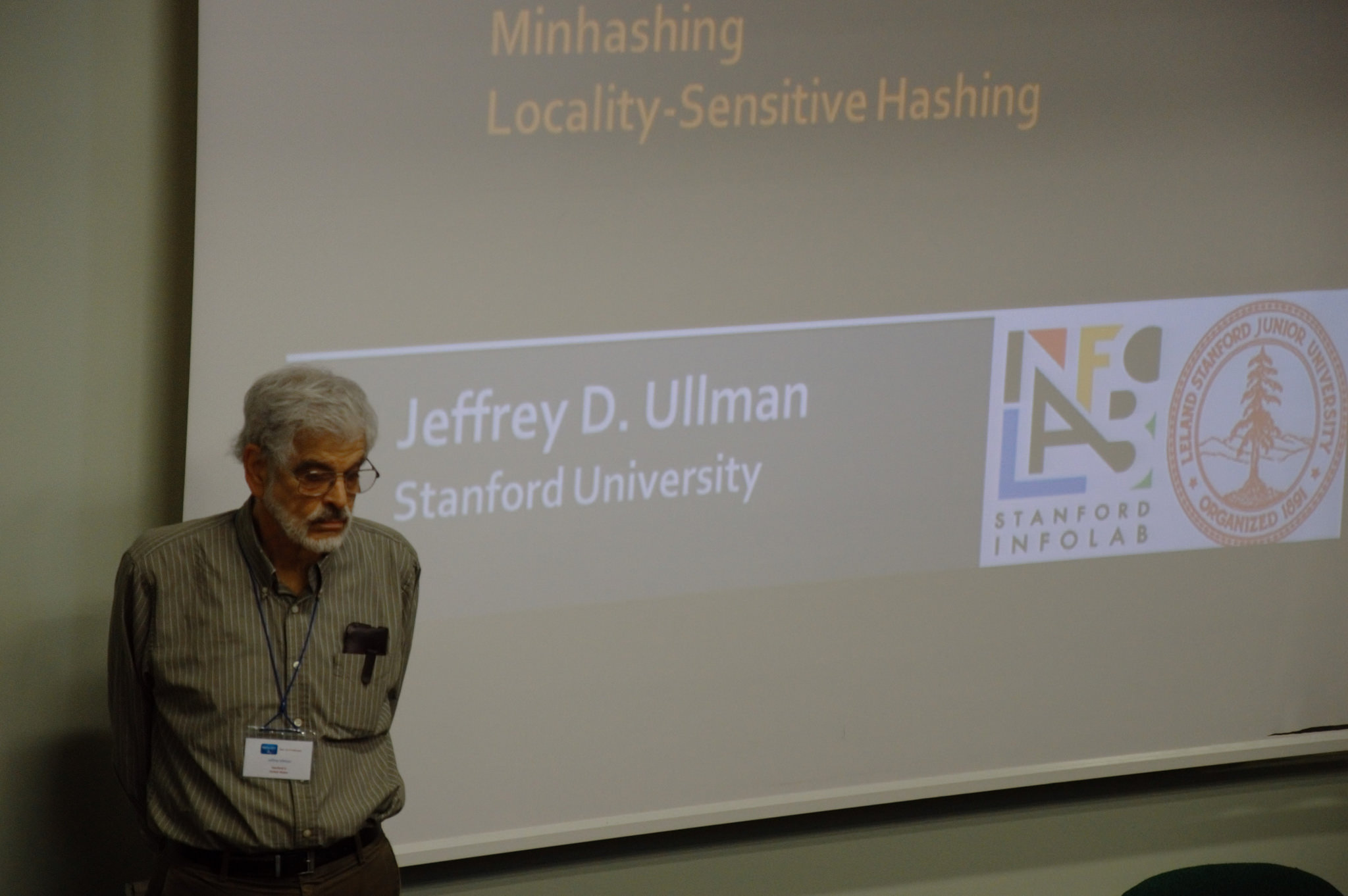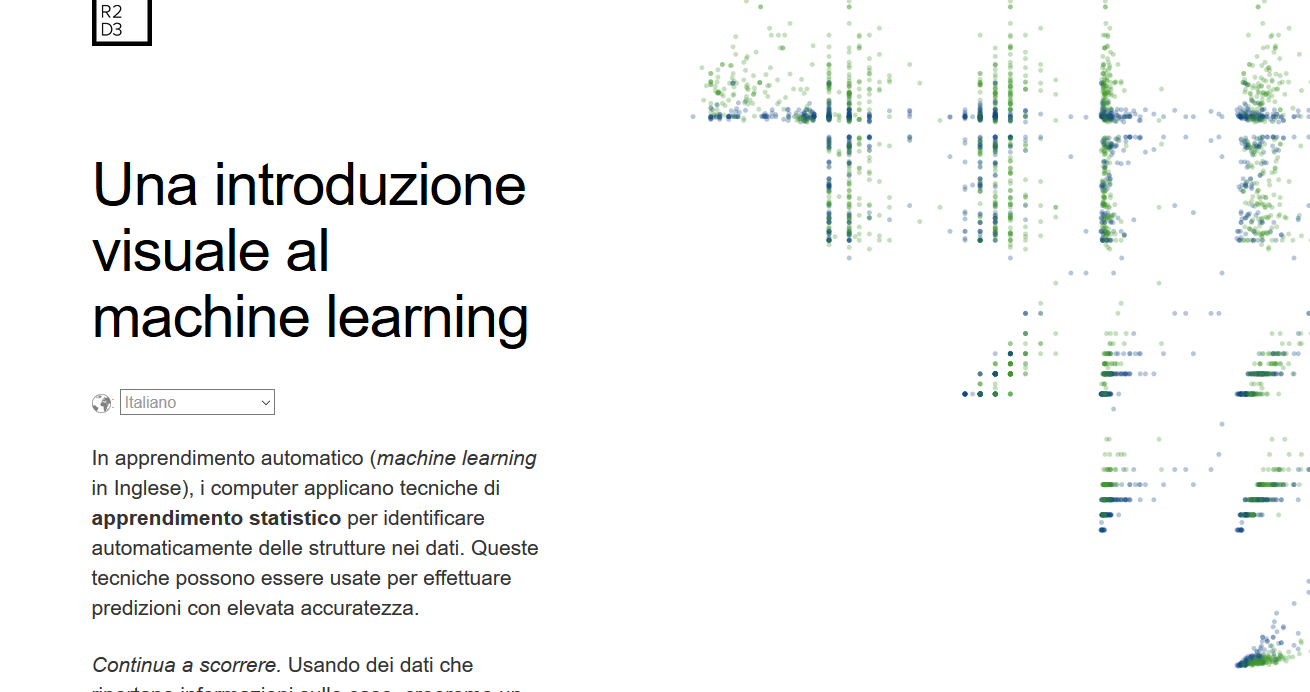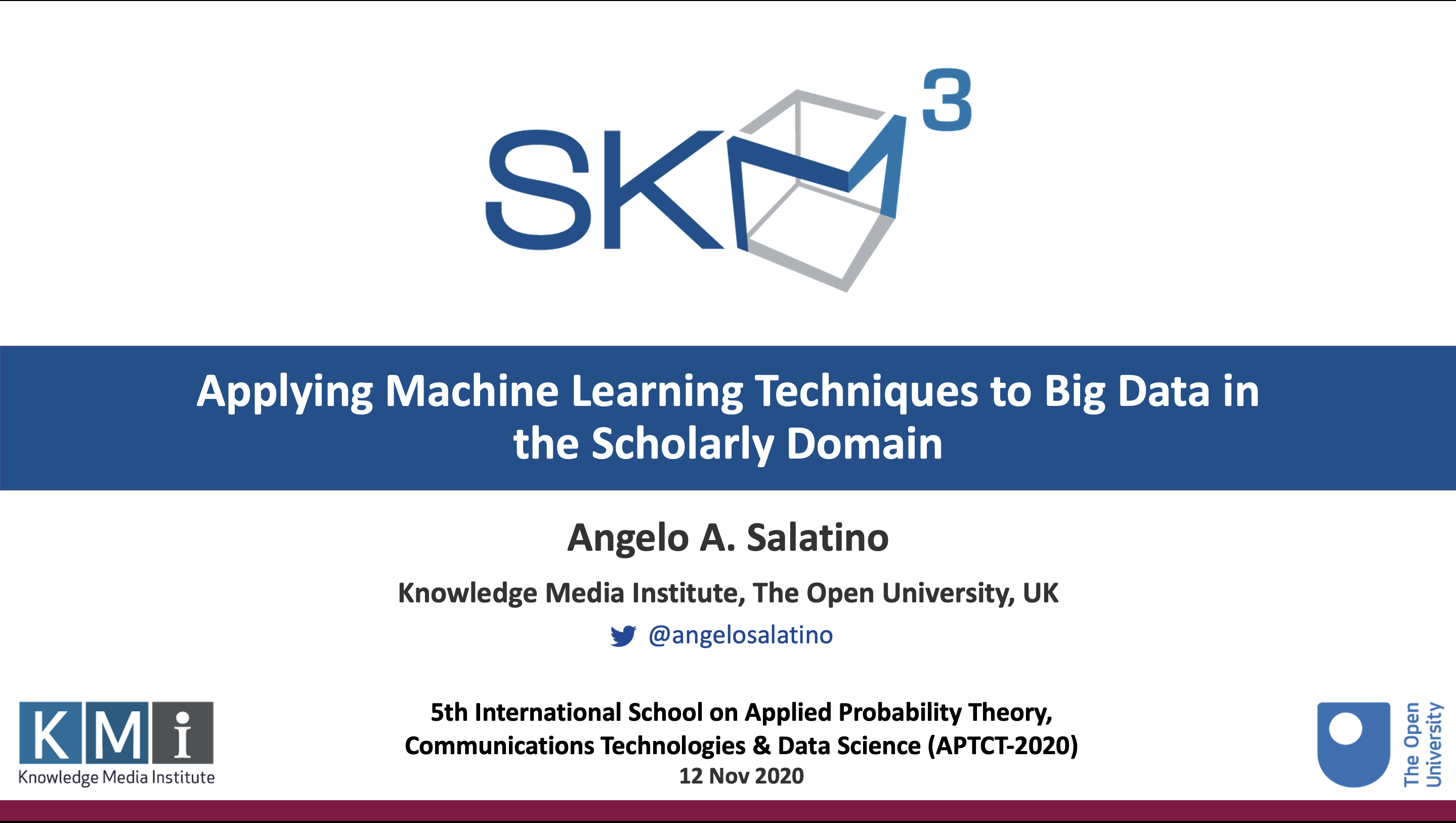Ontologies of research areas have been proven to be useful in many application for analysing and making sense of scholarly data. In this lecture, I will present how we produced the Computer Science Ontology (CSO), which is the largest ontology of research areas in the field of Computer Science, and discuss a number of applications that build on CSO, to support high-level tasks, such as topic classification, research trends forecasting, metadata extraction, and recommendation of books.
Tag: Machine Learning

Book Review: Weapons of Math Destruction of Cathy O’Neil
Everyday activities are more and more shifting to a digital environment. Digital gadgets such as smartphones and werable devices are becoming inseparable part of our lives promising mostly convenience. New digital technologies have been mainly seen as empowering technologies for the users. FitBit, for example, is claimed to be a motivating device to lead a […]

BigDat2017: a review
This week I have been attending the 3rd edition of the Big Data winter school: BigDat2017. It was held in my former campus, at the University of Bari (IT). It was a really nice feeling to be back for a while, sitting on those benches and following courses, once again. Big Data has recently gained […]

A Visual Introduction to Machine Learning: Italian Translation
The R2D3 team (http://www.r2d3.us/) developed a visual introduction to Machine Learning. This introduction uses data visualization technologies to show a workflow that can help for the creation of a machine learning model able to make accurate predictions. Lately, many people volunteered to translate this introduction in different languages. I took care of the Italian version: Una introduzione visuale […]
[LAMRECOR] Logistica avanzata per la mobilità di persone e merci: modelli matematici e sperimentazioni per nuovi protocolli di recapito della corrispondenza
Introduction The LAMRECOR project (Advanced Logistics for people and goods mobility: mathematical models and trials related to new protocols for mail delivery) develops a set of technological solutions and services for advanced logistic, through a high integration of the sorting and delivery system of mail and other postal products of Poste Italiane SpA, with innovative ICT […]
Grid Search SVM
The Grid Search SVM is a Java-based application that allows to perform the grid search of an SVM classifier. According to the section 3.2 of (Hsu, Chang and Lin: A Practical Guide to Support Vector Classication) [1], the grid search consists in identifying the best (C, γ) values that allow to classify accurately the unknown […]
Design and Implementation of an innovative framework for Speech Emotion Recognition
[English] With this article I want to publish my thesis work in Human-Computer Interaction, for the Master’s Degree in Computer Systems Engineering at Polytechnic of Bari. The entire thesis has been written in Italian. For this reason, I have prepared a English brief summary explaining all materials, methods, results and conclusions. Use the following link […]



